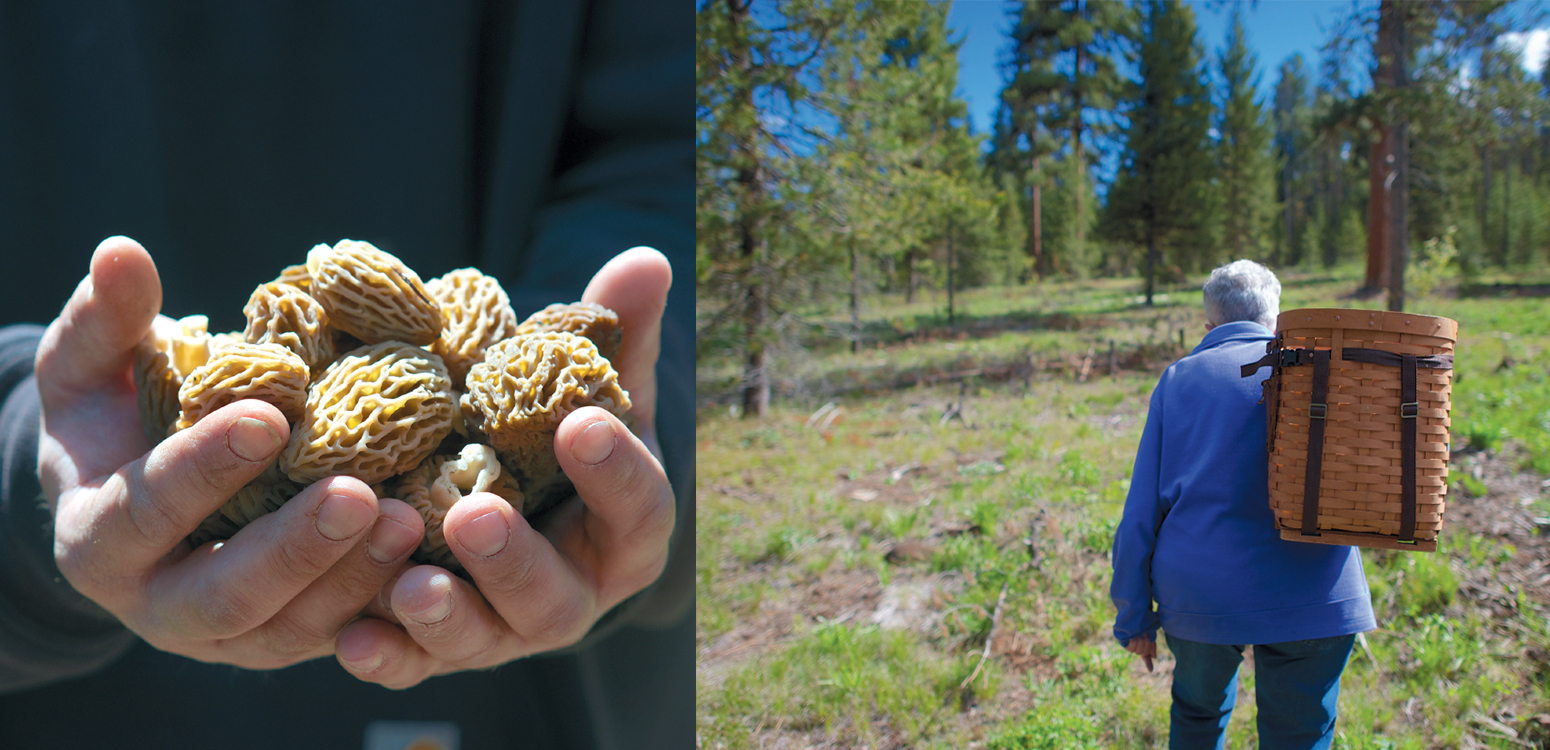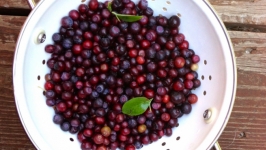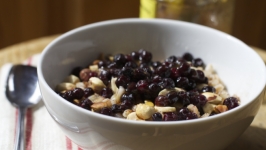Foraging from the Forest Floor: A Life in Mycology
I've always been more of a wild mushroom alarmist than aficionado, despite hearing about the delectable porcini, chanterelles and morels in Idaho forests. The cure to my mushroom cowardice arrived recently in the petite and energetic person of Hope Miller, a mushroom expert, who lives in McCall. She and her late husband, Orson Miller, have been international forces in the world of mycology for 45 years.
McCall's conifer forests are habitat to thousands of mushroom species, some edible, many not. These mycological mysteries are what drew the Millers to the West. In 1961, they settled in McCall, first as a summer retreat, then to retire. Orson, who passed away in 2006, was a Professor of Botany and Curator of Fungi at Virginia Tech for 32 years. Hope had focused on the edibles, writing a mushroom recipe book, as well as co-authoring with Orson North American Mushrooms, A Field Guide To Edible and Inedible Fungi. They traveled extensively with students and other mycologists around the world studying and collecting mushrooms. Hope continues to lead classes, cooking demonstrations and forays across the United States and in McCall for amateurs drooling to snag and cook an edible mushroom.
In late May on a brilliant sunny day after a period of rain, a small group of us met her for a mushroom foray. Miller hands each of us a light, but deep, lidded wicker basket and soon we're on McCall's back roads threading scattered trees and pasture bordered by dark forest. We park on the side of a dirt road, and full of anticipation, begin our search. Our eyes fasten to the ground, hoping to spot the conical shape of a morel in between the pine needles, prolific wild flowers and wild strawberries.
Mushrooms flourish here because of elevation and the great variety of trees, she explains. Conifers such as ponderosa pine, Douglas fir, western larch, grand fir, lodgepole pine, Englemann spruce and subalpine fir are the most common, along with aspen and cottonwood; and each has a symbiotic relationship with mushrooms of various types. The trees provide the one thing mushrooms lack, carbon, as well as phosphorus and nitrogen. The mushroom plant, lying underneath the forest floors and generally unseen by human eyes, is a delicate and vast network of threads called mycelium that seek the roots of trees.
An excellent way to find mushrooms is to locate the tree first. Miller recommends the booklet that's free and published by the State of Idaho, "Trees of Idaho," to become familiar with trees in McCall.
Only about five percent of mushrooms are edible and luckily, some of the most delicious edibles can be found in the Payette National Forest. Miller quickly lists the most well known.
"Each season has its star mushroom. Spring and early summer, it's the morels; in the fall, porcini and chanterelles that love a good rain before the frost, and will appear abundantly if the conditions are right. More uncommon is the purple chanterelle that grows next to old growth trees of Douglas fir."
The abundant trees are great partners to the well-loved morel mushroom which emerges sometime in late spring. Eventually, we reach tall, dark green conifers mixed with bright green saplings. Miller stops, and declares it a good morel spot. Old and new trees growing close together indicate a past fire, a condition that morels prefer. They love ash and disturbed soil. She advises us to look for logs, and puddles of water. We squeeze between saplings and duck under branches of the taller trees. And finally, one of our group spots a morel! It's wedged, a little deformed, between 2 branches on a slope under pine needles. Miller cuts the mushroom from the stem, and slices it in half. The stem is hollow, one attribute of the true morel. And that is all we need to do – finding one morel almost always means you'll find another, which our group does – though not many.
Because five percent of the mushrooms here are also highly toxic, when you do find them, good preparation and caution are necessary. Miller says it is best that novices go with the Southern Idaho Mycological Society – they have annual spring and fall forays that are attended by professional mycologists. She advises to learn five types at a time – once you master those, you can take on five more.
A favorite recipe of Miller's, one that she has prepared many times at forays, classes and over campfires, "Hot Mushroom Dip Especial," circulates through my mind as I continue looking. It involves sauteing fresh edible wild mushrooms in sweet butter, adding a little chopped onion and lemon juice, and finally, sour cream. But by morning's end, my basket is still empty. Thankfully, there's ample forest left to search for the main ingredient, millions of acres in the Payette and Boise National Forests. Who knows what I'll find; but thanks to Hope Miller, I'll have the facts, the tools, and the confidence to know what to look for.
YOUR FIRST 5:
Would you like to try your hand at foraging for edible wild mushrooms? Here are five distinct and delicious types recommended to master that grow in the forests of southwestern Idaho. Use a field guide to become familiar with their appearance, habitat and culinary preparation. Wild mushrooms can be dried for later use – and drying intensified the mushroom's flavor.
Mastering a mushroom type means understanding its distinctive characteristics such as knowing its color when young and as it ages; also what its cap, stalk, skirt, gills or pores, chamber and pits look like. For some mushroom types, another important characteristic is its spore print. Miller also says to try drawing the mushroom from memory – you'll be surprised what you may leave out. She advises taking a photo, and recording when and where you found the mushroom, and what was growing around it such as trees and plants. Also, to find your mushroom cache next year, take a GPS reading and record the coordinates.
1. Morels: Yellow, morchella esculenta Pers; Thick-Footed, morchella crassipes Fr; Black, morchella elata Fr; White, morchella deliciosa. Season: spring.
2. King Bolete (Porcini): Boletus edulis. Season: spring and fall.
3. Chanterelles: Golden, Cantharellus cibarious Fr; Western White, Cantharellus subalbidus. Season: fall
4. Milk Mushroom: Lacterious deliciosa: Season: late summer and fall.
5. Shaggy Manes: Coprinus comatus. Season: early spring and late fall.
PRECAUTIONS: by Hope Miller
1. On your first few forays, accompany a knowledgeable person. Going with the Southern Idaho Mycological Association on their spring or fall foray is a great introduction to hunting for mushrooms.
2. Always bring a field guide with you to double check mushroom characteristics.
3. Eat just a small portion of a mushroom that you have never eaten before.
4. Don't mix types of mushrooms you haven't eaten before in a dish. If you fall ill, you won't know which one made you ill.
5. Reserve a few mushrooms to take to the doctor in case you develop sensitivity to them.
6. Don't eat raw morels.








